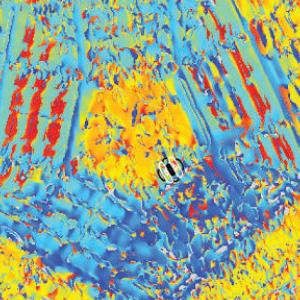I was just assembling a (personal, biased) reading list on neuronal models of motion sensitivity, and it occurred to me it might be good to do it publicly as a blog post. Please any neuro readers, chip in with your own contributions!
Books
Landy & Movshon (eds), Computational models of visual processing
Russell & Karen DeValois, Spatial Vision
Concepts
Zanker, J., Modeling human motion perception. I. Classical stimuli. Naturwissenschaften, 1994. 81(4): p. 156-63.
I think this might be a good place to start – what do you reckon?
Models of simple motion sensors
roughly corresponding to V1 in my mind.
Adelson, E.H. and J.R. Bergen, Spatiotemporal energy models for the perception of motion. J Opt Soc Am [A], 1985. 2(2): p. 284-99.
Poss my all-time fave in the genre. So clear and logical.
Watson, A.B. and A.J. Ahumada, Jr., Model of human visual-motion sensing. J Opt Soc Am A, 1985. 2(2): p. 322-41.
van Santen, J.P. and G. Sperling, Temporal covariance model of human motion perception. J Opt Soc Am [A], 1984. 1(5): p. 451-73.
van Santen, J.P. and G. Sperling, Elaborated Reichardt detectors. J Opt Soc Am A, 1985. 2(2): p. 300-21.
Three more classics.
Perceptual consequences of this sort of motion sensor:
Sheliga, B.M., et al., Initial ocular following in humans: a response to first-order motion energy. Vision Res, 2005. 45(25-26): p. 3307-21.
Such a nice demo with the missing-fundamental stimulus.
Serrano-Pedraza, I., G. P., and A. Derrington, Evidence for reciprocal antagonism between motion sensors tuned to coarse and fine features. Journal of Vision, 2007. 7(12): p. 8 1-14.
Intriguing result and nice clear modelling
What does MT do differently?
Heeger, D.J., E.P. Simoncelli, and J.A. Movshon, Computational models of cortical visual processing. Proc Natl Acad Sci U S A, 1996. 93: p. 623-627.
Getting into the difference between V1 and MT, pattern vs component motion etc
Perrone, J.A. and A. Thiele, Speed skills: measuring the visual speed analyzing properties of primate MT neurons. Nat Neurosci, 2001. 4(5): p. 526-32.
How do you get a neuron tuned to speed from neurons tuned to spatial and temporal frequency?



















